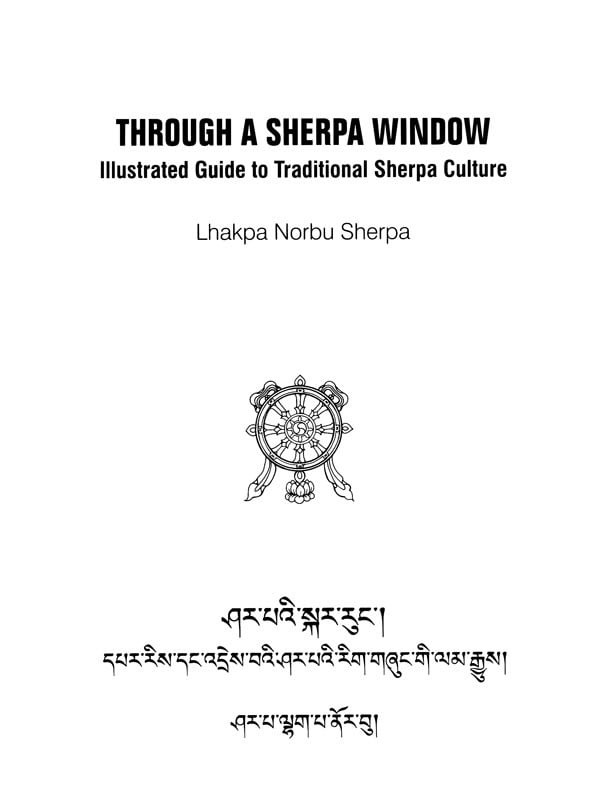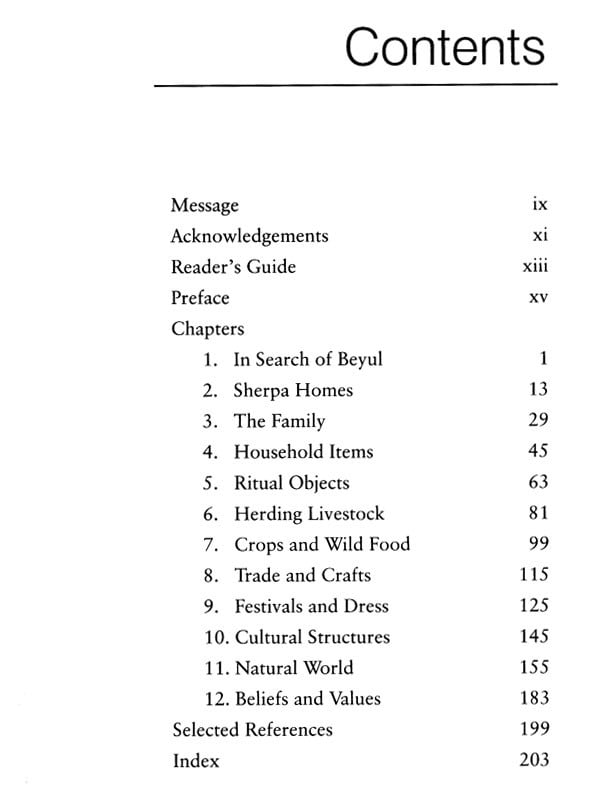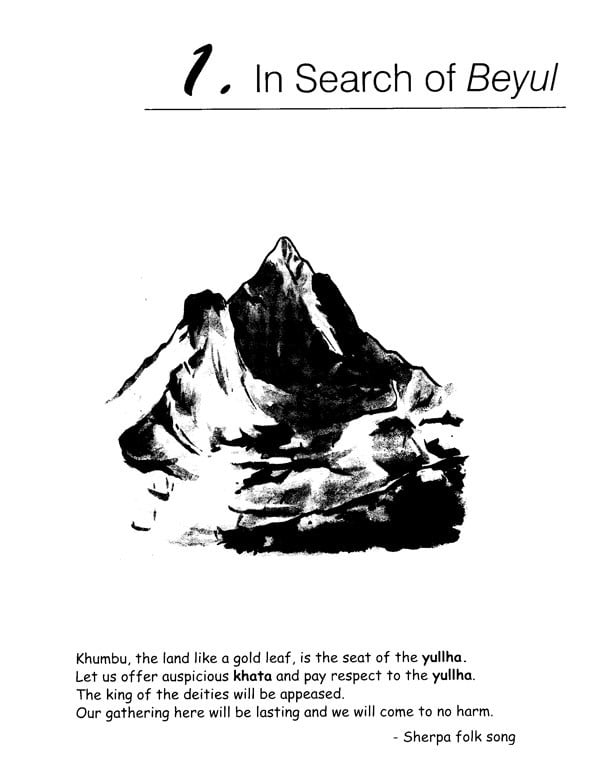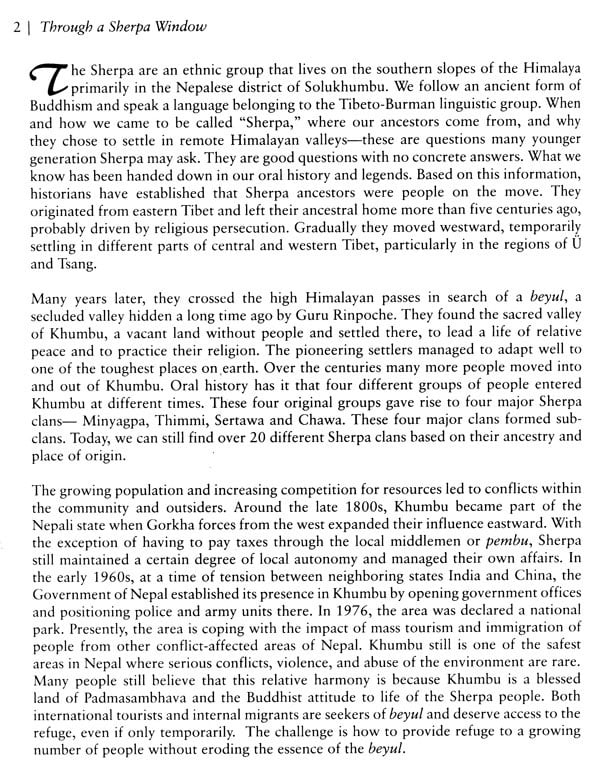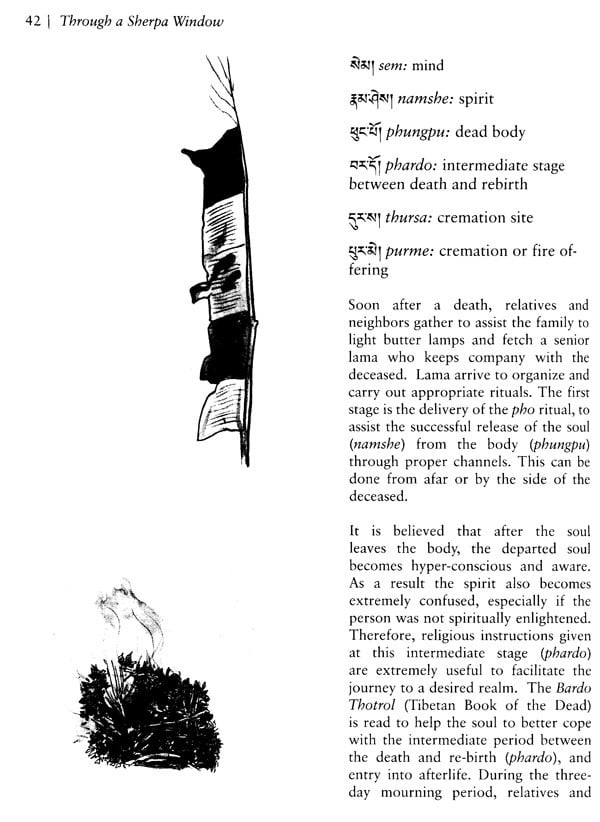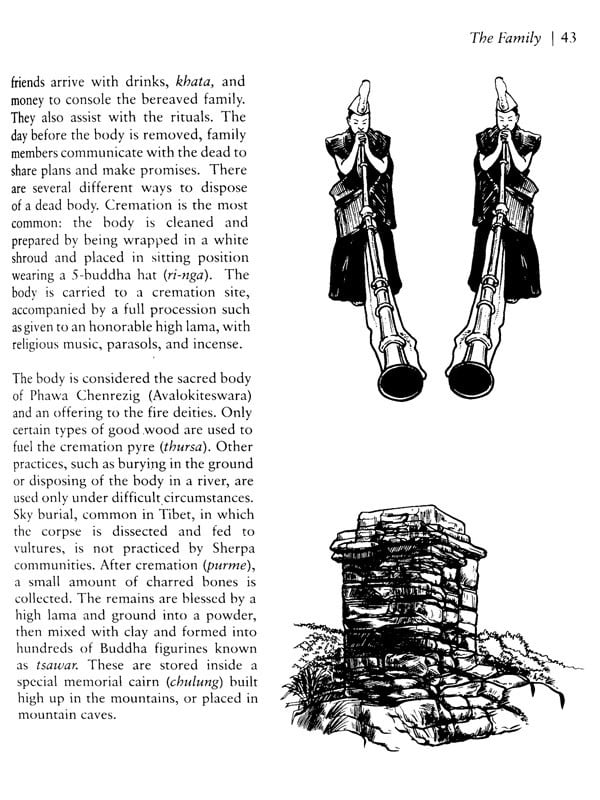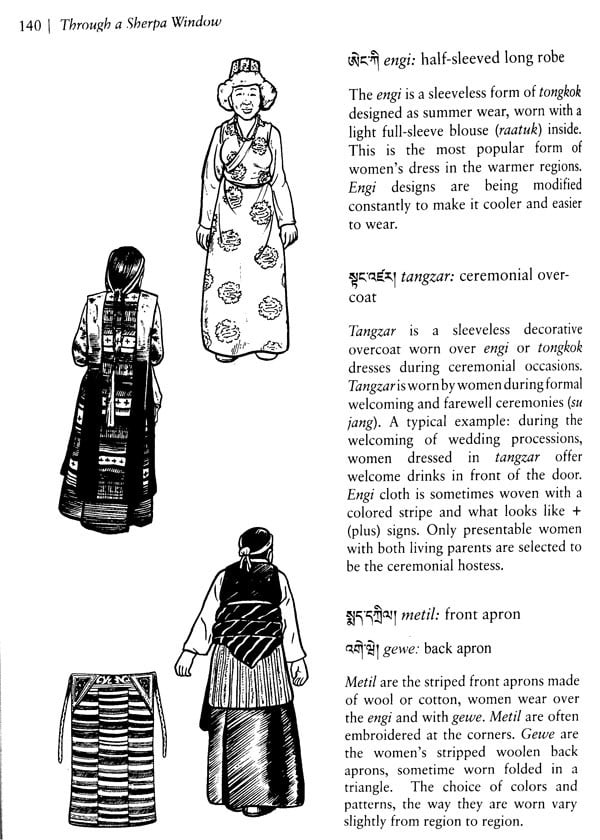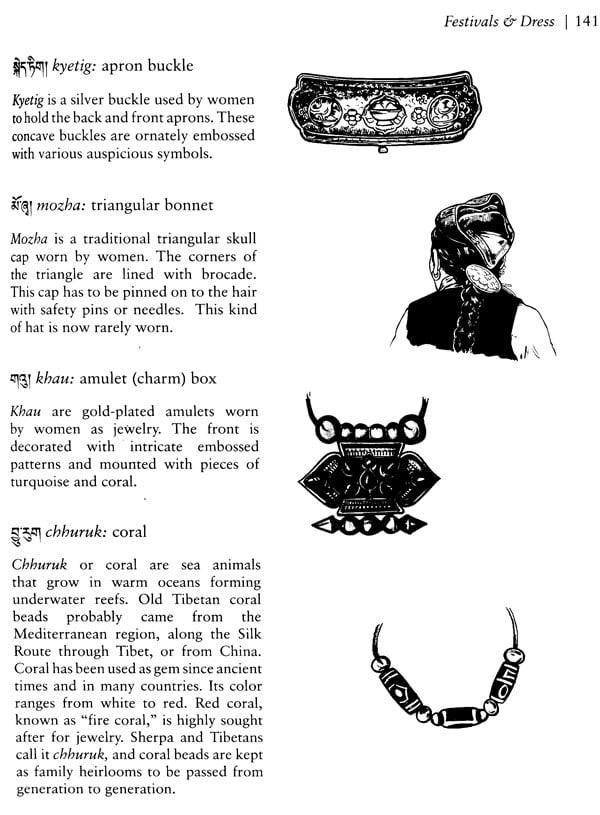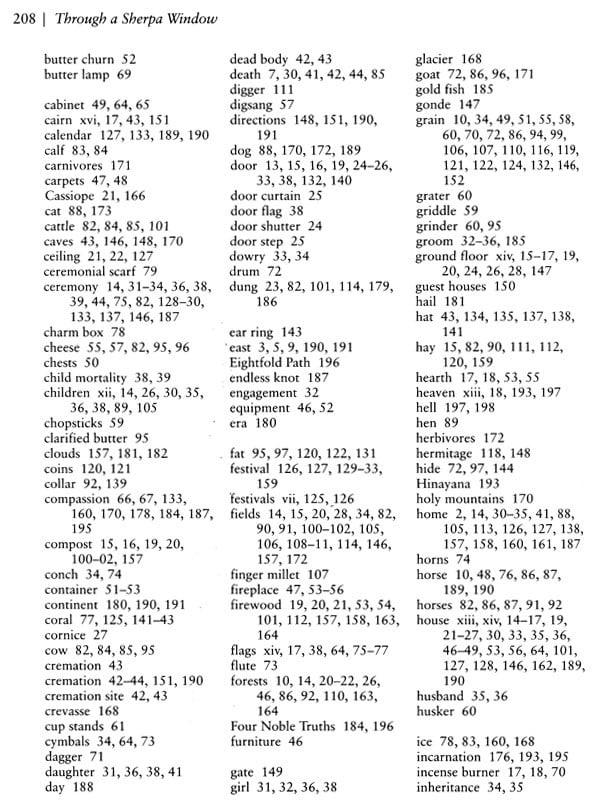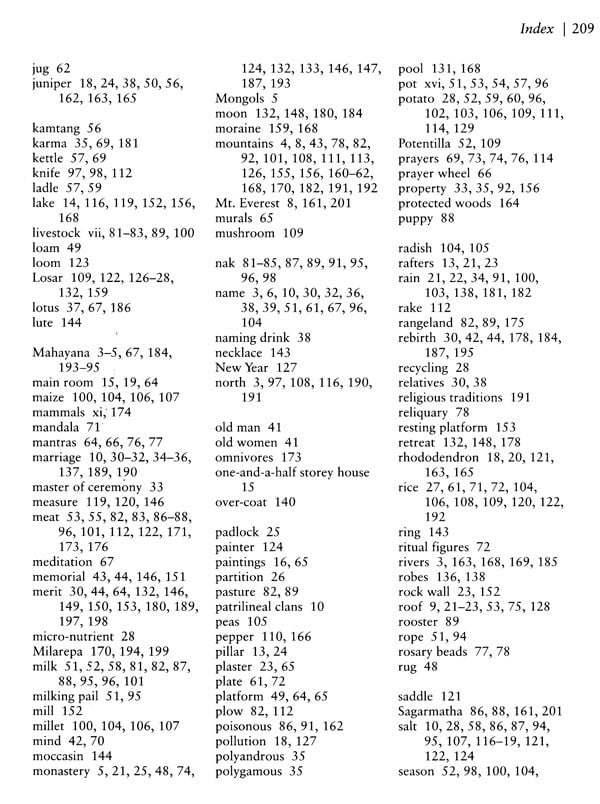About the Book The Sherpa are Tibeto-Burman people from the Nepal Himalaya. They are best known for their mountaineering skills es guides and porters on Himalayan expeditions. The Himalayan heights also known as death zones are stressful and difficult environments Despite these difficulties, Sherpa guides have managed to earn a reputation as reliable loyal, and honest workers. The culture of the Sherpa people is recognized for its conservation ethics and sense of environmental responsibility, Although, the traditional homes of the Sherpa people are located at forbidding altitudes. they have managed to make these highlands relatively safe and prosperous places to live. These successful adaptations are not purely because of luck or hard work. There are Sherpa values, ethics, and way of thinking that have an influence This lustrated book introduces the readers to the history material culture, spirituality and environment that shape Sherpa culture Although, this book is written from a Sherpa perspective to increase cultural appreciation among younger. Sherpa, other members of the Tibeto-Burman communities across the Nepal Himalaya will find surprising similarities and differences that are equally interesting. It will also be of interest to other readers who are interested in the indigenousculture and traditions of the Himalaya.
About the Author Lhakpa Norbu Sherpa, Ph.D., was born in a mixed farming family belonging to the Traktho clan in the remote village of Thameteng in Solukhumbu District, Nepal. His parent herded yaks, grew potato and bartered salt. In 1963, Lhakpa Norbu received the opportunity to go to school when Sir Edmund Hillary opened the first school in his village. He studied national park management in New Zealand and joined the Government of Nepal to become a Park Warden in 1980 While with the Government he spent twenty years planning, developing and managing protected areas in Nepal. He completed a Masters degree in Forest Resources under a Fulbright scholarship in 1988. He became the first person from the Sherpa community to receive a doctoral degree when he completed a PhD in 1999 from the University of Washington, USA. He joined The Mountain Institute in 2000 to work in the Tibet Autonomous Region (China) as an international Expert and assisted with environmental capacity building. rural development and cultural restoration in the Gomolangma Nature Preserve. Presently he is working as a Director of the Himalayan Program of The Mountain Institute.
Preface The language in particular will disappear beyond recovery within two generations if efforts are not made to slow down its erosion. Most household and clothing items used 50 years ago are becoming museum pieces. Cheaper and more readily available imported substitutes are displacing locally made traditional items. As traditional items and activities go out of use, the knowledge, skill, and language associated with them also vanishes. Gradual cultural change is natural and often essential to cope with a changing socio-economic environment. But fast and unguided cultural modification can rob us of the indigenous knowledge, values, skills, arts, and crafts that are important parts of our cultural heritage. These losses mean loss of our ethnic identity.
A complex set of social, political, and economic forces are set against Sherpa culture. First, the homogenization and Hinduization policy of the Nepali state sought to absorb minority ethnic cultures; modern school education does not accommodate study of local languages and scripts-or customs. Secondly, the Sherpa economy rapidly transformed from a dependence on trading, herding, and farming, to trekking and mountaineering after the 1950s. Trekking and tourism not only led to westernization but also encouraged migration out of the community. These changes have brought significant economic improvements, comfort, and financial security to many. The chief cost is the loss of cultural integrity, especially among the younger generation. I feel that we can have new things, learn new languages, and benefit from them, without losing our own language and identity.
This book, part of a larger drive to document and preserve Sherpa culture, is aimed particularly at educated, younger generation Sherpa, who have been deprived of the opportunity to learn about their cultural traditions and language. Many of them want to know more about their heritage. I am confident that future generations will not need to make a carved birch basin to wash their clothes or drink out of a wooden bowl. Yet the knowledge that these were the tools and techniques their ancestors used to survive in one of the world's harshest landscapes will enrich their knowledge, their lives, and their pride in being Sherpa.
**Contents and Sample Pages**
